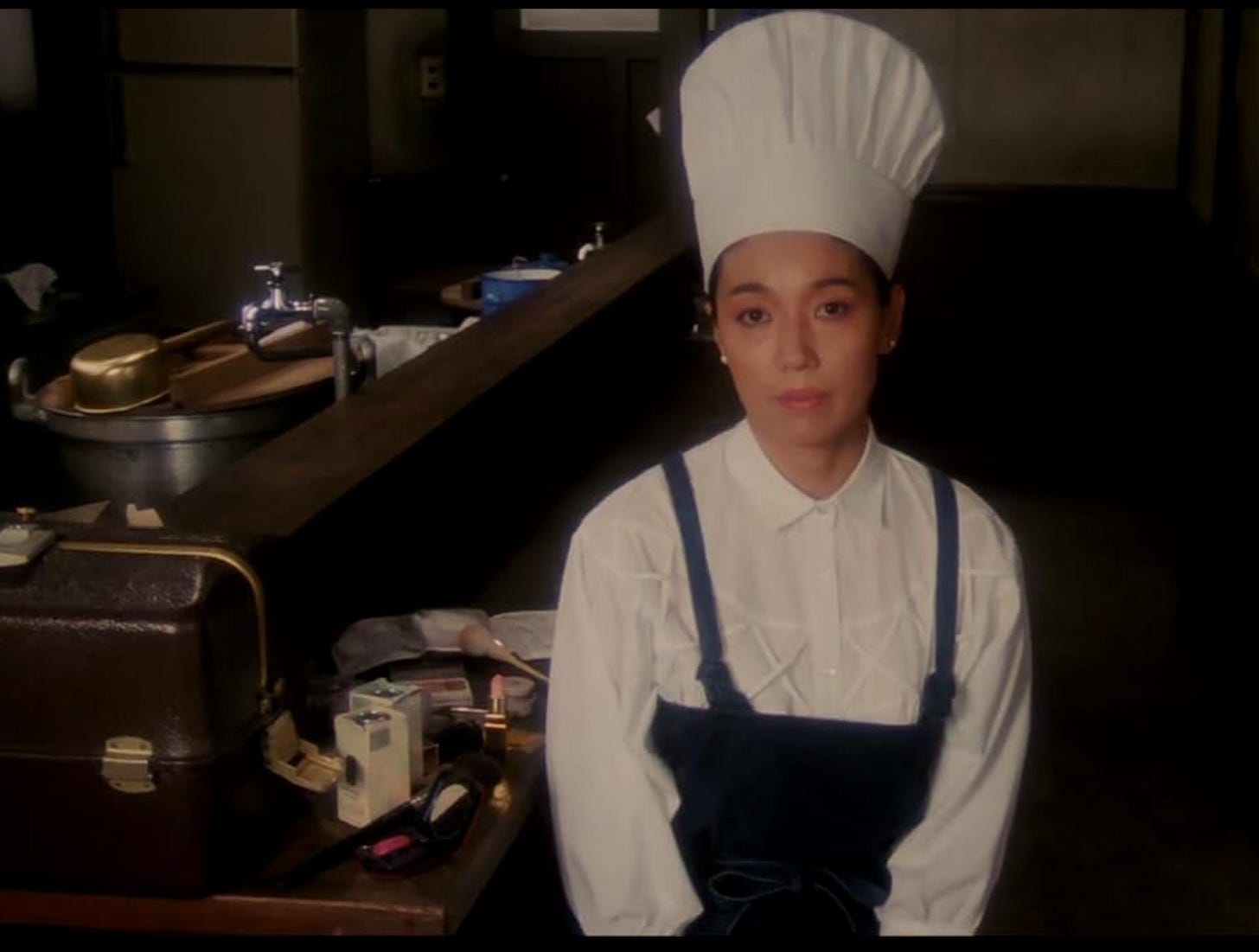Can entrepreneurs learn quality and customer service lessons from a 40 year old movie?
Brilliant insights from a Japanese noodle western for your Entrepreneur’s Adventure
It is a dark and rainy night. The truck driver is staring relentlessly ahead, negotiating tough road conditions, while his co-driver is reading to keep him awake. The reader’s voice is describing in minute detail how to properly eat a bowl of Ramen soup. The driver suddenly pulls the truck over and jumps out saying, “that reading is making me hungry, let’s eat.” They run through the torrential rain, and enter an uninspiring looking Ramen shop.
So begins the movie Tampopo, a zany and Zen Japanese film from 1985. Beyond its imported western tropes, detailed contemplation of Japanese food culture, and madcap antics the central story is how these two truck cowboys help a widowed woman re-invent her Ramen shop. It really is a masterpiece of meaningful insights that every entrepreneur can follow to improve their business. The overarching message is that you must persistently pursue all elements of your product, your service delivery and your focus on customers.
The motley protagonist group starts first by breaking down the preparation and constituent parts of Ramen soup. This lesson applies to any product / service offerings, making sure you understand how each piece fits together to create a meaningful and valuable whole. In the movie, the widow learns about this by finding experts and experienced old hands, who each know about one of the parts of making the soup. One of the jokes that the movie makes is that often these experts were ordinary people, even some decrepit ones, not necessarily the cream of Japanese business society. This take away is particularly important for new or inexperienced entrepreneurs, to find the right truly experienced people that can reliably help you put together a great product or service.
The merry band visit competitors, to see what the widow is up against. They also go to the shop that is known to have the absolute best Ramen in Tokyo, in order to set a visionary goal in their minds for what she is trying to accomplish. What was interesting is that they didn’t spend all that much time with competitors - just enough to get a feel of the landscape - but they did use the best ramen shop to set the level of what they wanted to rise to.
They spent just as much time through direct observation, determining what it was the customers were looking for. They realized it was more than just the best soup. As important was the speed and quality of service within the restaurant, as well as the ambiance of it. Again, these are fundamental lessons for each and every entrepreneur: to understand the values and behaviours of their target customers. In something that appears to be revolutionary in our current era, her focus was on meeting customer needs not doing whatever she personally wanted to. The group’s aim was to get a large number of repeat customers. Once again this seems at odds with our current business climate that spends too much time and money getting initial customers and not enough time building an ongoing set of customer relationships.
This movie re-iterated one of my key messages to my consulting teams through the years, which is to focus directly on the customers you want to serve who are right in front of you, and don’t get distracted by your competitors to the left and right. Listening to your customer is much more fruitful than worrying about slight new improvements from your competitors.
The movie dealt with the financing side of reinventing her Ramen shop in a number of ways. She got loans, she did some contra deals, and she let some suppliers invest in her business. Investment was especially true for the contractor who rebuilt her premises. He also had quality first, creating a top notch restaurant right down to the proper height and width of the counter. That attention to detail is so important.
The movie spent a long time on her practice. She learned to make the important base stock over and over, and then how to incorporate various other ingredients to create the best soup. Humourous scenes showed her practising taking customer orders, remembering what each customer had ordered and watching them as they consumed her ramen. If the customer finished it right down to the last drop, they knew she had got the recipe perfect.
The final message that I took from Tampopo was that in the process of rebuilding her ramen business, this woman was changing her entire outlook on life, incorporating quality, service, and new friends in a process of self actualization. This can be a foundational goal of being an entrepreneur, building your values into your business.
The last scene has the truck driver cowboys, finishing every drop of her soup and disappearing into the proverbial sunset. So the answer to the question I posed in the article title is “only if you are willing to listen and learn from anywhere grasshopper.”




